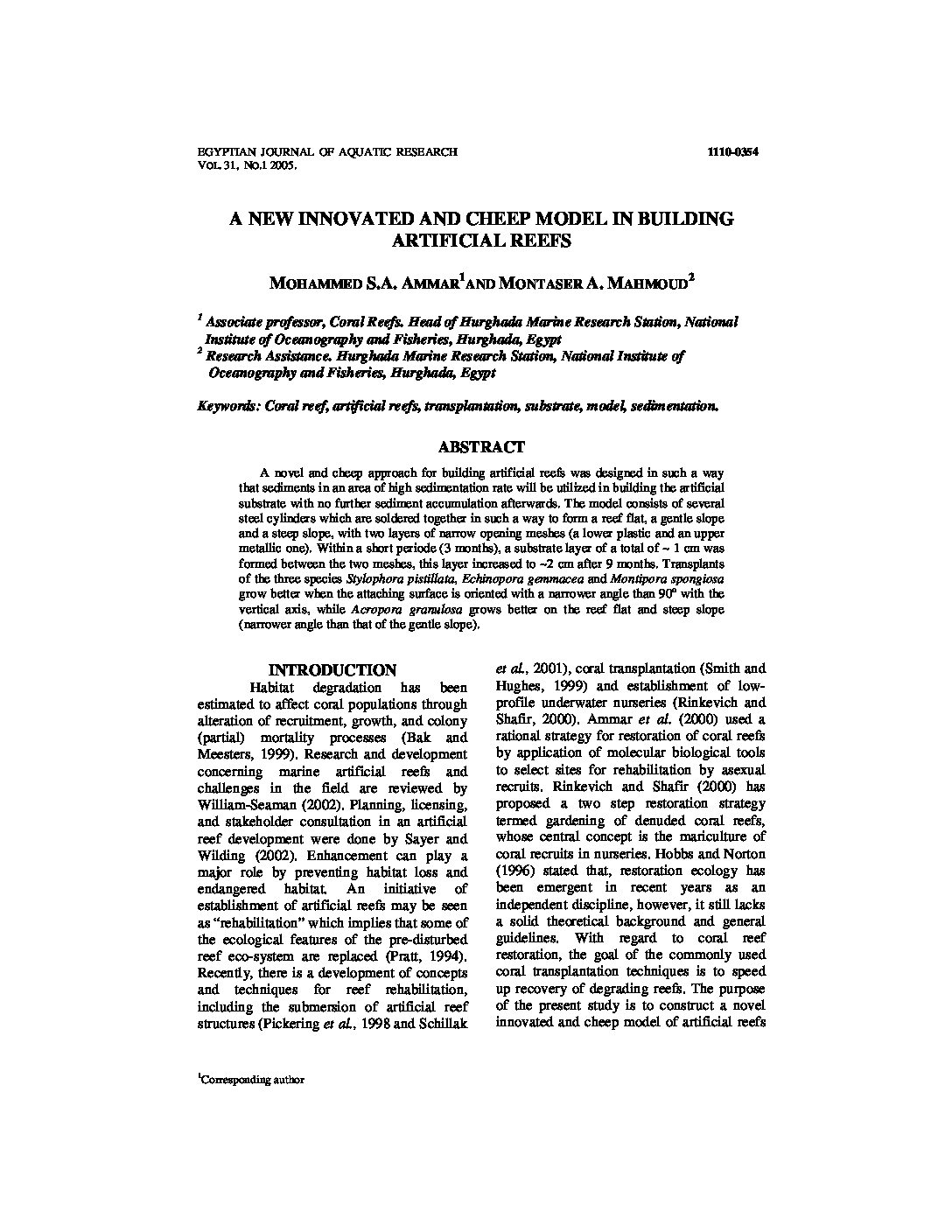Categories
vol-31SEDIMENTS, CORAL REEFS AND SEAWATER INTERACTIONS
IN SOME COASTAL LAGOONS, RED SEA, EGYPT.
ABD EL-WAHAB, M.*; DAR, M. A.** AND MOHAMMAD, T.A.***
National Institute of Oceanography and Fisheries, Hurghada, Red Sea
Keywords: Coastal lagoons – sediments – Coral reefs – Seawater – Biodiversity – Heavy metals –
diversity index – evenness index.
ABSTRACT
The sediments, coral reefs and seawater interactions were studied in four coastal
lagoons along the Red Sea. There are very commutative and correlative relations between
these constituents, therefore, any alterations occur in the sediments and seawater will be
directly reflected on the coral reef status and biodiversity. Consequently, the studied coral
communities in the four lagoons are considered healthy and multifarious. The diversity
index (H`) in the studied lagoons is varying between 2.07 and 3.35 while the evenness
index (J) is fluctuated between 0.61 and 0.94. These values are high relative to some other
localities in the northern Red Sea.
The heavy metals; Fe, Mn, Zn, Cu, Pb and Cd were studied in the sediments, seawater
as well as the coral reefs. Safaga lagoon recorded the highest iron and manganese contents
in the sediments, followed by Abu Ghsoun lagoon while Abu Shaar lagoon comes later.
Despite the high landfilling effect surrounding Abu Shaar lagoon, Fe and Mn
concentrations are low relative to the other lagoons. Seawater in Safaga lagoon recorded the
highest average contents for Fe, Mn, Zn and Pb followed by Abu Shaar lagoon. These
results support that the high trace metal contents in the seawater are mainly engaged with
the high suspended particulate matter (SPM), the high turbidity rates as well as the
subsurface interaction between the surface sediments and the water column. In the coral
skeletons, Fe recorded its highest content in Abu Ghsoun lagoon followed by Safaga
lagoon, indicating that the recovered coral species have more tolerance and adaptation than
the original species.







